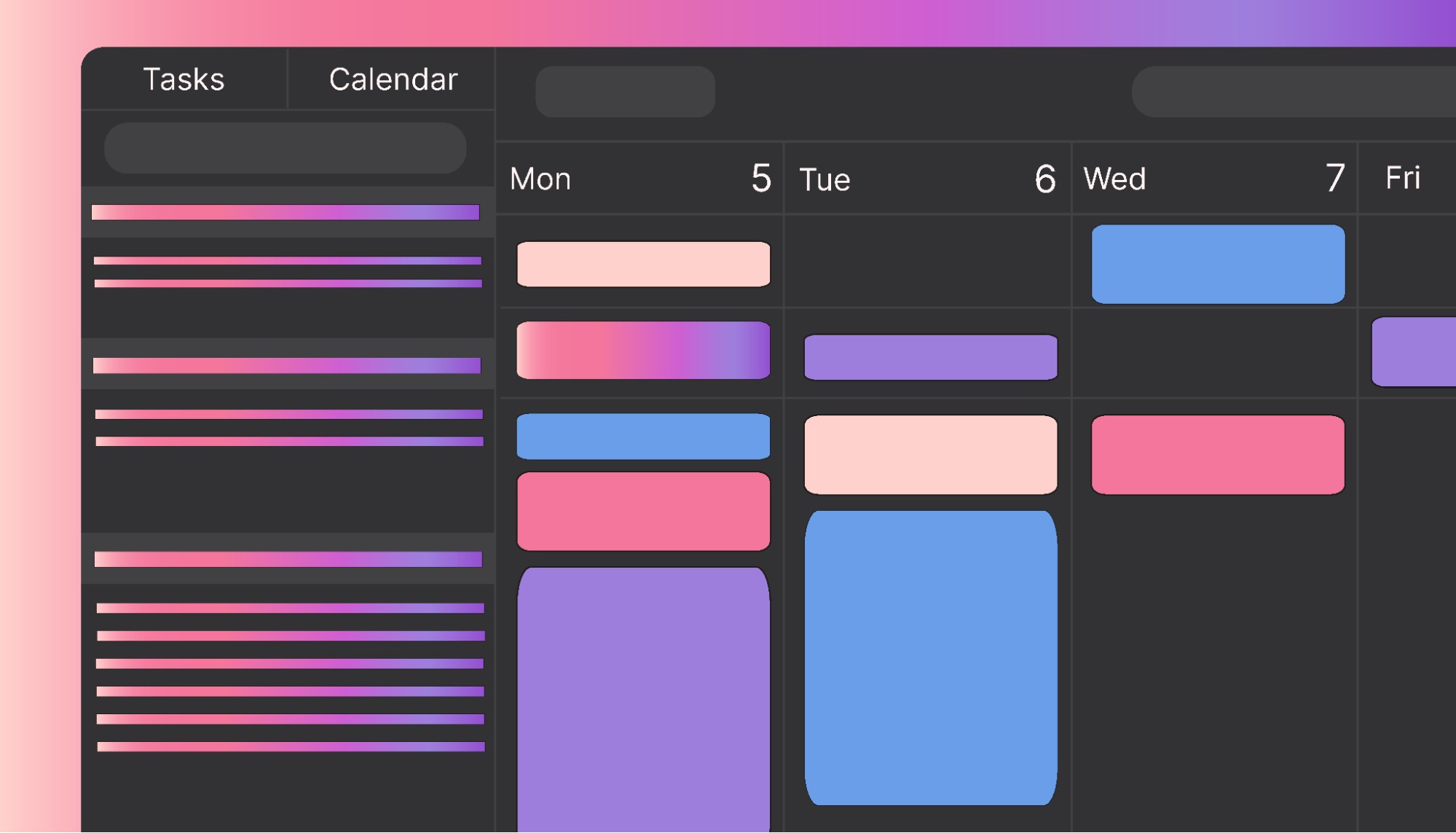All hands on deck!
All-hands meetings don’t need to be tedious. With the right mindset and tactics, you can bring an atmosphere to them that your workers will appreciate.
Gathering your team together and inspiring them with regular all-hands meetings can bring a ton of value to your business, as it gets everyone on the same page and excited for work initiatives.
If you’ve ever struggled to keep these important meetings effective and engaging, read on because we’ve got you covered.
What are all-hands meetings?
An estimated $37 billion is lost in the U.S. each year to unproductive meetings. As such, it’s important to take a close look at different meeting types and the value they bring.
Balancing which meetings are crucial with making sure your company continues to hit its target goals and meet deadlines is always a challenge.
Enter all-hands meetings.
An all-hands meeting is a gathering that includes all members of an organization. It provides a platform for employees to exchange ideas, stay informed about business activities, and address various challenges. It also fosters team building and collaboration.
Because all-hands meetings involve everyone in a company, they often seem to employees like a great opportunity to tune out. But they don’t have to be dry. You can use them to unveil big-picture announcements, dial in on initiatives from upper management, or give shout-outs for exceptional performance.
Why do you need all-hands meetings?
All-hands meetings are super important when your company wants to promote a positive work culture, especially if you’re rolling out new initiatives or restructuring. They’re also crucial for widely dispersed teams since they can help boost a sense of connection and the pursuit of common goals.
How do all-hands meetings differ from other types of meetings?
All-hands meetings are unique because they are company-wide. All employees on all teams in the workplace get together. Unlike daily standups or decision-making meetings, they are all about keeping everyone aligned from a big-picture perspective. They also provide the perfect time to recognize outstanding performance at both the team and individual levels.
Benefits of all-hands meetings
There are many reasons all-hands meetings are great for your business. Among other things, they help build a positive work culture, encourage ownership, promote transparency, and provide important company updates.
Use all-hands meetings to keep your employees inspired by both your positive company culture and important business news and goals.
Here’s what all-hands meetings can do for your organization:
Nurture connections and strengthen engagement
When employees feel connected to their company culture, they’re 68% less likely to report feeling burned out at work and 55% less likely to be hunting for another job.
A positive work culture is directly related to interpersonal connections and professional friendships. It’s important for your employees to feel like they can trust their teammates (and their leaders) and be recognized for the skills they bring to the workplace. This sense of community is helpful for your business, especially when it comes to attracting and retaining high-quality talent.
As mentioned, all-hands meetings are also an excellent time for recognizing solid employee performance. Call out hardworking employees so that they know just how much you appreciate the work they’ve done for your team.
Keeping your employees inspired and connected is one of the biggest benefits of holding regular all-hands meetings. Don’t miss out on this opportunity to keep your company cohesive and collaborative.
Increase transparency and share company goals
All-hands meetings increase transparency by highlighting business goals, the steps needed to reach them, and where the company currently stands in meeting them. It’s especially important to be transparent when goals are particularly challenging so that your employees know where to focus their energy.
By pulling up the curtain, everyone can experience meaningful alignment and understand what they’re striving for every day at work. Sharing project progress and making sure priorities are crystal clear will go a long way toward giving your teams the information they need to tackle their business goals.
Everyone on a team appreciates being brought in to see the big picture and ask questions. Establish a feedback loop where you can also hear some of your employees’ great ideas for how to reach business goals. Gathering diverse points of view can really help your business strategize for success.
Support participation
The biggest hurdle of all-hands meetings is the same as their greatest advantage: meaningful engagement. You don’t just want folks to tune in and tune out when it suits them. Real engagement means communication must be a two-way street between the presenters and the audience.
Here are some reliable ways to keep everyone on your team interested and participating in all-hands meetings:
Smart scheduling
Keep your all-hands meetings high visibility and high priority, with regular meeting cadence and timing. Your employees will be able to schedule their other tasks around these meetings since they take up a regular spot on their calendars.
That being said, you might be wondering how often you should hold your all-hands meetings and how long they should last. While there’s no one-size-fits-all answer, you can choose the ideal frequency after considering a few key factors.
If your company is still growing and your team is small, you can probably easily schedule and expect full attendance in an all-hands meeting every other week or even weekly. Once your business scales up with hundreds of folks to bring together, monthly or even quarterly meetings might make more sense.
If your business is particularly adept at maintaining open lines of communication, you might also be able to streamline your meetings a bit more. If your team consistently communicates effectively, sharing updates and strategies, you can save all-hands meetings for bigger pieces of company news and updates to shorten them. Likewise, if communication isn’t a strong point in your organization, it’d probably be prudent to have more frequent all-hands meetings.
Determine what’s most appropriate: in-person or online
Don’t be afraid to leverage technology for your all-hands meetings to get as many employees to attend as possible.
The right app makes all the difference for dispersed or hybrid teams. Holding your meetings over Zoom, Google Meet, Teams or any number of other platforms could actually save you on overhead costs since you won’t need to sacrifice large swaths of working office areas or rent a space to bring everyone together.
Make sure that you record your all-hands events, too, whether they take place in person, remotely, or in a hybrid manner. You’ll need to ensure that everyone in the company, whether they were able to attend or not, is able to view the meeting after it wraps up so they can stay updated.
Keep it personable
Icebreakers don’t have to elicit groans from your employees. Find fun, new icebreaker activities or short exercises to incorporate into your all-hands meetings. This will get your team members to turn on their mics and cameras and get to know each other better.
It’s also super important to highlight new employees so they can begin to feel welcome and impactful in their new roles.
 |
Take the time to develop polls and short questionnaires to elicit employee feedback, too. These are great forms of interaction, and keeps attendees engaged. Make sure you always allow time for a Q&A session. You can also ask your employees to submit any questions they might have ahead of time — when you send out the meeting agenda, for instance. That can help you prepare effective responses.
How to build a great agenda
Now that you’ve gotten the rundown on what all-hands meetings are, why they’re so important to your business, and the keys to keeping them interesting for your employees, it’s time to review agenda-building.
Make sure to set yourself up for success. Sending agendas out early and setting time ranges for each section of your meeting helps to make sure you keep everything on track, will help employees look forward to your meetings, and ensures you can get through all of the necessary material.
Set the stage
Framing is everything. Make sure you and all other presenters have done a dry run of the meeting to make sure your technology runs as expected and you can seamlessly hand the meeting off from one person to another. Designate one individual to run or moderate the meeting to help the meeting items stay within the allotted time frames and smoothly transition from one section to the next.
Make sure you have any new introductions or icebreakers ready to roll at the start of your all-hands meeting. Welcome new employees and give kudos to high-performing employees and to teams that showcase your company’s values.
Serve up the meat and potatoes
It’s time to outline your business status report and gather the bullet points for other major pieces of news, like a new acquisition or a new huge client. This is where you want to speak to your high-level business goals and discuss strategies to achieve them.
Every all-hands meeting should include educational opportunities. This might look like quick workshops led by subject matter experts that help support the new goals or initiatives you just outlined for the entire company. And if you’re introducing change, this is a great time to help your employees begin to understand and embrace it.
Open the meeting to real-time feedback and questions
Incorporate into each meeting Q&A time where the floor is opened up, and upper management members are available to answer employee questions. Also, encourage your employees to share their feedback and points of view. You might uncover a new great strategy or perspective to help everyone work together toward common goals.
Follow up for future success
Just because the meeting has wrapped up and everyone is back to their regular workday duties doesn’t mean the all-hands meeting is over. Gather feedback from your employees after each meeting so that you can shift future agenda items and activities as necessary for the best possible outcomes.
Consider survey tools, like SurveyMonkey or Officevibe, to gather short, structured assessments of your meeting and what folks would like to see more or less of. Make sure to implement changes based on this feedback to show your team members that you care.
Make your next all-hands meeting a success with Motion
Effective meetings play a crucial role in the success of small businesses, as they facilitate decision-making and ensure alignment between business executives and employees as they work toward common goals. They’re the perfect place to help make sure everyone is on the same page, paving the way for smoother day-to-day work tasks.
You don’t need to be overwhelmed with planning out your big agendas and looking at multiple calendars for scheduling. Let Motion help.
Motion can help streamline all the tasks on your team’s plate by organizing all on-the-go projects into a single schedule and making adjustments to the schedule as needed. The clarity this provides means you can give your team all the updates they need in every all-hands meeting.

Keisha Card is a Senior Project Manager in the digital space who is passionate about knowledge sharing. Let's demystify all things project management and Agile!







